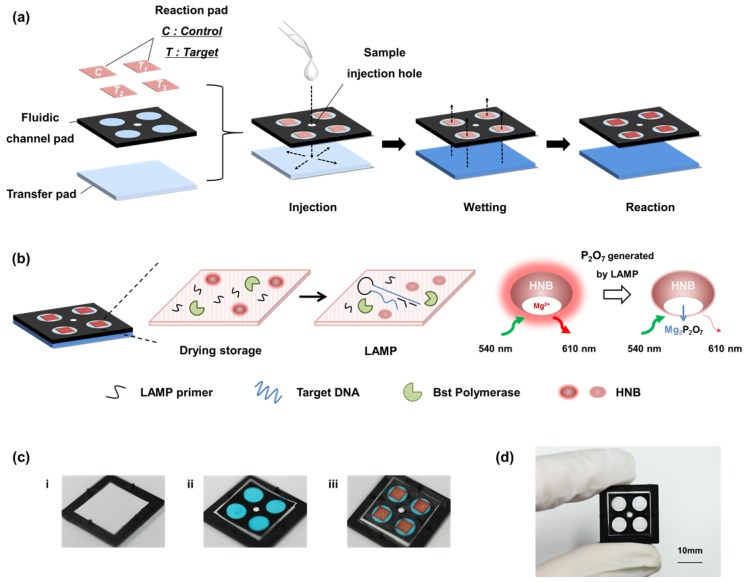Figure 1.
Scheme and images of a paper-based device for performing loop-mediated isothermal amplification (LAMP) with real-time simultaneous detection of multiple DNA targets. (a) Schematic illustration of structure and sample flow. The structure of the paper device is fabricated by stacking of three functional layers including the transfer pad, fluidic channel pad, and reaction pad. The sample solution flows uniformly into four reaction pads. (b) Analysis principle of the reaction pad. The four reaction pads contain target-specific LAMP primers and reagents for the LAMP reaction in the dry condition. When sample solution contacts the reaction pad, the dried reagents are activated. The LAMP reaction is performed by activating the dries reagents. The fluorescence intensity of HNB is reduced during the LAMP reaction, which indicates the result of the analysis. (c) Image of fabrication process. i) Transfer pad with asymmetrically structured PES membrane. ii) Fluidic channel pad stacked on the transfer pad. It is patterned by wax printing, resulting in four channels shown as blue circles. Blue aqueous ink was used for visualization of the fluidic channels. The smaller white circle in the center is the area for the sample injection hole. iii) Reaction pads were placed on each channel of the fluidic channel pad. The reaction pads were also marked in red aqueous ink for visualization. (d) Image of the fabricated paper device. Red and blue ink were not used in the actual device.

